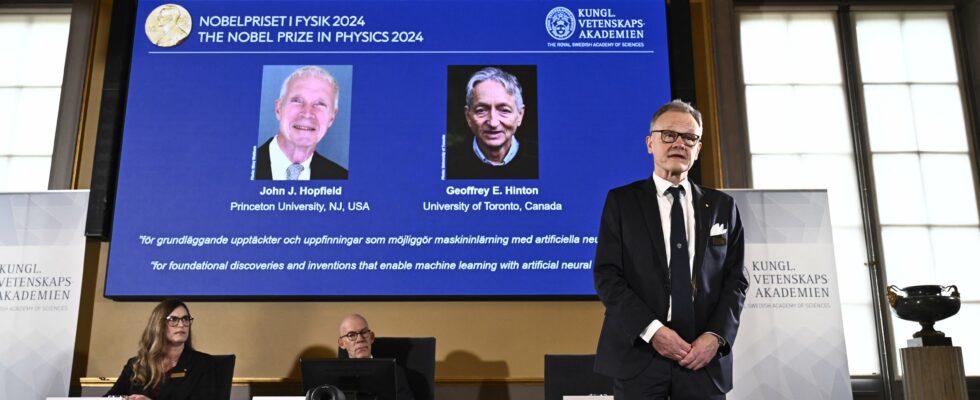The Nobel Prize in Physics was awarded on Tuesday October 8 to the American John Hopfield and the British-Canadian Geoffrey Hinton Geoffrey Hinton for their respective work in “machine learning”, used in the development of artificial intelligence. “Both of this year’s Nobel Prize winners in physics used the tools of physics to develop methods that are the basis of today’s powerful machine learning systems,” the jury said in its statement.
John Hopfield, 91 years old and professor at the prestigious Princeton University, and Geoffrey Hinton, 76 years old and professor at the University of Toronto in Canada, were rewarded “for their fundamental discoveries and inventions that enable machine learning using neural networks artificial. They have been working on the subject since the 1980s.
Artificial neurons inspired by the human brain
Artificial neural networks are inspired by the network of neurons in our brain. “The 2024 laureates used fundamental concepts from statistical physics to design artificial neural networks that function as associative memories and find patterns in large data sets,” said Ellen Moons, chair of the Nobel physics committee, in front of the press. These artificial neural networks have been used to advance research in fields as diverse as particle physics, materials science, and astrophysics. They have become part of our daily lives, she continued.
“I’m amazed… I didn’t imagine that this could happen,” reacted Geoffrey Hinton, joined by the jury. Last year, the Nobel Prize in Physics was awarded to the Franco-Swedish Anne L’Huillier, the Frenchman Pierre Agostini and the Austro-Hungarian Ferenc Krausz for their research on light flashes which made it possible to understand the ultra-rapid movements of electrons. in atoms and molecules.
